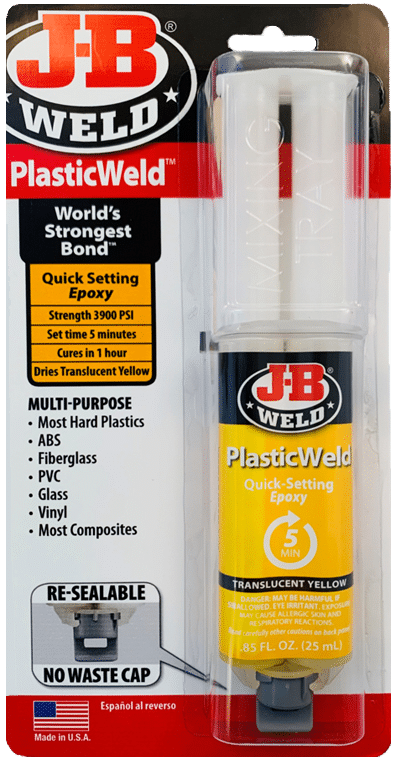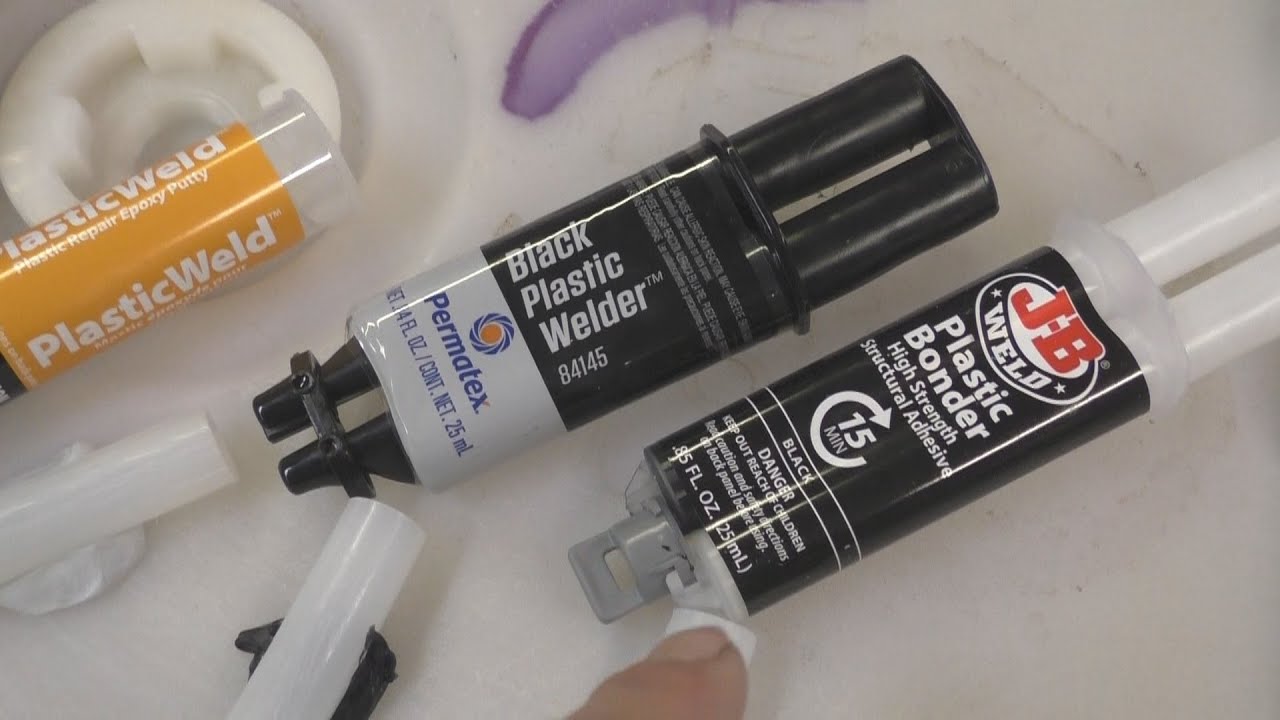Plastic bonder bonds plastics together, while plastic weld fuses them using heat. Plastic bonder is ideal for quick fixes, while plastic welding offers a stronger, more permanent solution.
When choosing between the two, consider the specific needs of your project. Understanding the differences between plastic bonder and plastic welding can help you make an informed decision. We will explore the nuances of each method to help you determine which one is best suited for your unique requirements.
Let’s delve into the world of plastic bonding and plastic welding to understand their applications and advantages.

Introduction To Plastic Repair
Plastic repair is a common practice in the automotive industry. Plastic damages such as cracks, holes, and breaks can occur due to various reasons, including accidents, weather, and wear and tear. When it comes to plastic repair, two common methods are plastic bonder and plastic weld.
Plastic bonder is an adhesive that can bond plastic surfaces together, while plastic weld is a technique that uses heat and pressure to melt and fuse plastic. Choosing the right repair method depends on the type and severity of the damage, as well as the type of plastic involved.
| Common Plastic Damages | Recommended Repair Method |
|---|---|
| Minor cracks and chips | Plastic bonder |
| Large cracks and holes | Plastic weld |
| Broken plastic parts | Plastic weld or replacement |
It’s important to choose the right repair method to ensure a strong and long-lasting repair. If you’re not sure which method to use, consult a professional or follow the manufacturer’s instructions carefully.
Basics Of Plastic Bonding
When it comes to plastic bonding, it is essential to understand the basics. Plastic bonding involves joining plastic materials together using adhesives or bonding agents. There are different types of plastic bonders available, including epoxy adhesives, cyanoacrylate adhesives, and polyurethane adhesives.
Plastic bonders work by creating a strong and durable bond between plastic surfaces, making them ideal for various applications. When choosing a plastic bonder, it is important to consider the type of plastic being bonded and the specific requirements of the project.
Pros And Cons Of Plastic Bonders
Plastic bonders offer quick and easy fixes for plastic materials, but they may not provide the same strength as plastic welding. While plastic bonders are convenient for small repairs, plastic welding creates stronger and more durable bonds, making it ideal for larger or load-bearing applications.
| Pros and Cons of Plastic Bonders |
|---|
Advantages of Using Bonders:
|

Step-by-step Guide To Plastic Bonding
When comparing Plastic Bonder and Plastic Weld, it’s important to understand the Surface Preparation process. Prior to application, ensure the surfaces are clean and free of any contaminants. Next, carefully roughen the surfaces to provide a better bonding area. For the Application Process, follow the manufacturer’s instructions for mixing and applying the adhesive or welding material. Pay close attention to the recommended temperature and curing times. After applying the bonder or welding material, allow for sufficient Curing time to ensure a strong bond. Once cured, you can proceed with finishing the surface as needed. This step-by-step guide will help you achieve successful plastic bonding results.
Understanding Plastic Welding
Plastic welding is a process that joins pieces of plastic together. This technique uses heat to melt and fuse the plastic, creating a strong bond. There are various plastic welding techniques, such as hot gas welding, extrusion welding, and ultrasonic welding. Hot gas welding involves using a stream of heated air to melt the plastic, while extrusion welding uses a plastic welding rod that is softened and fused with the base material. Ultrasonic welding uses high-frequency ultrasonic vibrations to create heat and bond the plastic. Each technique has its advantages and suitability for different types of plastic and applications. Plastic welding is commonly used in industries such as automotive, construction, and manufacturing to create strong and durable plastic assemblies.
Advantages Of Plastic Welding
Plastic welding offers numerous advantages over plastic bonding. With plastic welding, you can achieve stronger and more durable joints, ensuring long-lasting results. Unlike plastic bonding, which relies on adhesives, plastic welding utilizes heat to fuse the plastic together, providing a seamless and robust connection.
| Plastic Bonder | Plastic Weld |
| Requires adhesive | Melts and fuses plastic |
| Strength varies | Offers superior durability |
| Limited applications | Versatile for various uses |
How To Perform Plastic Welding
When it comes to plastic welding, it’s important to understand the differences between plastic bonder and plastic weld. Plastic bonder involves using adhesives to bond plastic components, while plastic welding uses heat to fuse the plastic together. Both methods have their own advantages and are suitable for different types of plastic repairs.
| Equipment Needed | The Welding Process |
| Plastic welder, filler rod, safety gear | Clean surfaces, heat plastic, apply filler rod |
Comparing Plastic Bonder And Weld
Plastic bonder and plastic weld are two popular ways to repair plastic. While plastic bonder is an adhesive that bonds plastic together, plastic weld uses heat to melt and fuse the plastic. Both have their pros and cons, and the choice between the two depends on the type of plastic and the repair needed.
| Plastic Bonder | Plastic Weld |
| Adhesive for bonding plastic parts. | Joins plastics by melting and fusing. |
| Ideal for small fixes and quick repairs. | Suitable for strong, long-lasting bonds. |
| Affordable and easy to use. | Costlier but offers more durable results. |
| Great for DIY projects. | Recommended for industrial applications. |
Safety Precautions And Best Practices
|
Wearing protective gear is crucial during repairs to prevent injuries from fumes and splatters. Safety goggles shield your eyes, while gloves protect your hands from chemicals. Ensure proper ventilation in your workspace to minimize exposure to harmful vapors. |
|
When working with adhesives, follow the manufacturer’s guidelines for safe usage. Avoid skin contact with the bonding agent and work in a well-lit area. For effective repairs, clean and prepare the surfaces thoroughly before applying the adhesive. |
Future Of Plastic Repair
When it comes to plastic repair, the choice between plastic bonder and plastic weld has a significant impact on the future of the industry. Innovations in repair technology have led to a growing focus on sustainability and environmental impact. Manufacturers and technicians are continually seeking sustainable solutions that minimize environmental harm. The debate between plastic bonder and plastic weld is central to this discussion, as it directly affects the longevity and eco-friendliness of repairs. Understanding the differences and implications of these methods is crucial for making informed decisions in the realm of plastic repair.

Frequently Asked Questions
Faq 1: What Is Plastic Bonder And How Does It Work?
Plastic Bonder is an adhesive that effectively bonds and repairs plastic materials. It works by creating a strong molecular bond between the plastic surfaces, providing a durable and long-lasting repair solution.
Faq 2: What Is Plastic Welding And How Does It Differ From Plastic Bonder?
Plastic Welding is a technique that uses heat and pressure to join plastic materials together. Unlike Plastic Bonder, which uses an adhesive, Plastic Welding physically melts and fuses the plastic surfaces, creating a seamless and strong bond.
Faq 3: Which Is Better, Plastic Bonder Or Plastic Welding?
The choice between Plastic Bonder and Plastic Welding depends on the specific application and the condition of the plastic being repaired. Plastic Bonder is ideal for smaller repairs and areas where heat may cause damage. Plastic Welding is recommended for larger repairs and situations where a stronger bond is required.
Faq 4: Can Plastic Bonder Be Used On All Types Of Plastic?
Plastic Bonder is designed to work on a wide range of plastics, including ABS, PVC, acrylic, polycarbonate, and more. However, it is always recommended to test the adhesive on a small, inconspicuous area before proceeding with the repair to ensure compatibility and adhesion.
Conclusion
Both plastic bonders and plastic welds have their own advantages and disadvantages. Plastic bonders are ideal for small repairs and bonding plastic to other materials, while plastic welds are better suited for larger repairs and joining two pieces of plastic together.
Ultimately, the choice between plastic bonders and plastic welds will depend on the specific needs of the project. It is important to carefully consider the options and choose the best solution for the job at hand.

